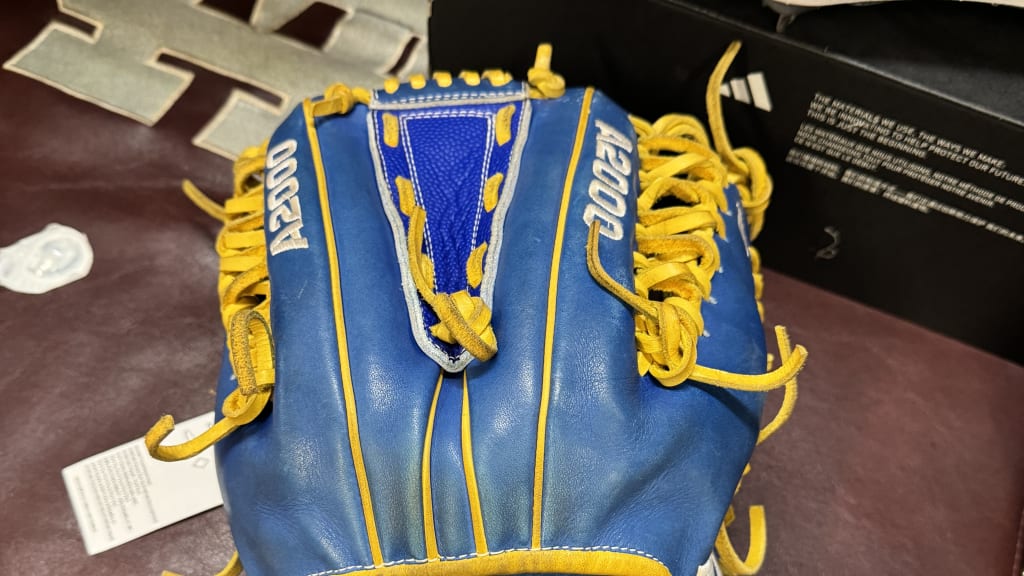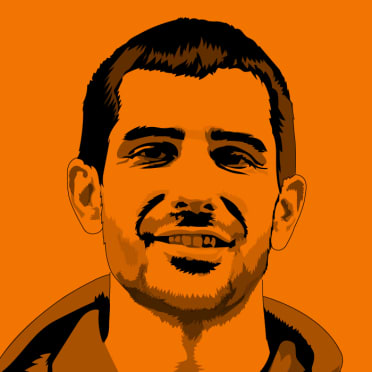This story was originally published in April, before Jurrangelo Cijntje was taken with the No. 15 overall pick by the Mariners in the 2024 MLB Draft.
It's amazing how easy Jurrangelo Cijntje makes something look that, for the rest of us, is pretty much impossible.
A human ability that only 1 percent of the population possesses. A baseball skill that just one modern-day pitcher has regularly used at the game's highest level. A wonderous anomaly, a near illusion, a superpower you'd think would be more reserved for a character in a Marvel movie than a player on a baseball field.
But it's all real: Cijntje (pronounced SAIN-ja) is a Mississippi State sophomore who can pitch baseballs with both arms. He's a right-handed pitcher. He's also a left-handed pitcher. And he's only getting better at it as he gets older.
"I throw 99 from the right side," Cijntje said, quite matter-of-factly. "And from the left side, I top out at 95."
Cijntje's ambidexterity began back when he was 6 years old on the Caribbean shores of baseball-loving Curaçao.
He was born a left-hander, but he wanted to be a catcher -- like his dad, Mechangelo -- who played professionally in the Netherlands. Left-handed catchers are almost as rare as ambidextrous pitchers. So, he began working on the strength and accuracy of his right arm. With tires and screws.
"We were just hanging out one time in the backyard," Cijntje remembered. "And my dad grabbed a ball and put a screw in it. So, when I threw the ball, the ball would get stuck in the tire. I was just throwing the ball with the screw in it and I think that developed my arm. It didn't actually take long for me to just start throwing with my right arm. ... It became almost natural."
It helped that Cijntje began exploring his ambidextrousness from such a young age, à la Billy Wagner. It's a time when the brain and body can more readily adapt and there are far less self-imposed inhibitions. Off the field, maybe as a result of his mound experimentations, Cijntje's handedness went in varying directions.
"I can only write with the right side, with the right arm," Cijntje said. "But if I have to eat, I can eat with both. If I just have to grab something, most of the time I grab with my left arm."
You may recall Cijntje's first major introduction to the baseball world as a switch-pitcher: the 2016 Little League World Series.
His Willemstad, Curaçao, team knocked off the defending-champion Japan squad before losing in the next round. Cijntje's double-handedness became one of the major storylines of the tournament.
By that point, the 12-year-old Cijntje had become so proficient with his right arm that it began to surpass his natural-born side. Although he could still do it, he'd stopped really practicing pitching or throwing with his left hand. He had other positions he was playing, like catcher and shortstop. Still, it was entertaining to see him switch hands mid-inning -- his coach had to run out to the mound to give him a different glove.
"I wasn't great from the left side, but I did get a lot of media attention," the now-20-year-old said.
Cijntje's distinctive talent wasn't fully put to use in games until he moved to Miami for high school. American coaches were astounded that a 16-year-old pitcher could pitch -- and pitch accurately -- using either arm. The fans loved it, too. (The rule is he must declare which arm he's using before an at-bat begins and cannot switch until after the at-bat is over).
"When I moved to States, I was playing in a Perfect Game," Cijntje said. "My coach was like, 'I'm gonna let you throw from the left side,' and so I just switched gloves and started throwing from the left side. And everybody, like you can just see the whole stands stand up. It was awesome. It was the first time seeing people actually getting engaged with it."
That's around the time that Wilson created a six-fingered, ambidextrous glove for Cijntje ... so he doesn't have to constantly grab an opposite-side version from the dugout. He has four now, and they are a sight to behold.

His next viral moment? The 2022 MLB Combine.
The 18-year-old struck out five of the six batters he faced in a scrimmage, two as a lefty and three as a righty. He was firing a 94-96 mph fastball and a 79-80 mph breaking ball from the right side, and an 88-92 mph heater and 75-76 mph breaking pitch from the left.
“It’s just a great opportunity to come here and be in an MLB stadium on the mound," Cijntje told MLB.com's Jim Callis at the time. "I just wanted to show everyone what I can do and just have fun."
The Brewers, impressed by a kid who could, you know, serve as both a right- and left-handed pitcher, selected Cijntje a month later in the 18th round of the 2022 MLB Draft. But the already college-committed student-athlete decided to enroll at Mississippi State.
Over the last two seasons as a Bulldog, the 5-foot-11 Cijntje has bulked up from 170 to 200 pounds. His fastball can hit 99 from the right and 95 coming in from the left. He led the team in strikeouts his freshman year and has been its ace so far this season -- putting up a 6-3 record with 64 K's and a 3.80 ERA.
He used to be much more comfortable pitching from his right side, but now his natural-born left is catching up. That's great for him and scary for any hitters -- lefty or righty -- trying to face him.
"I'm feeling very comfortable with both sides right now," Cijntje told me. "Even though I throw harder from the right side, my stuff from the left side is way better than last year. I believe in both of them."
Although it might be cool to have such a uniquely sought-after skill set, to be such a unicorn in a sport where most players have the same fundamental abilities can also be lonely. Fortunately, Cijntje has a good relationship with Pat Venditte, the person the switch-pitching, switch-hitting rule was named after and the only ambidextrous pitcher to regularly throw from both sides in the Majors in the last two centuries.
"Yeah, we chat it up with each other," Cijntje said. "Last week, when I threw against Florida, he texted me and said, 'Good job.' We talk about routines. Just know your body, how your body works and if you have to be early to work, stay on pace. (Cijntje's warmups take longer because he has to warm up both sides.) Don't rush yourself. That's a good way to go about it."
Venditte pitched to varying degrees of success over five seasons in the Majors, with velocities that were 10-15 mph slower than Cijntje's. So it does give great hope for the phenom to take his repertoire to the highest level. And that's exactly where he wants to go.
"As far as I can take it, I'll do it," Cijntje said. "My goal is to be a both-handed starting pitcher in MLB."
